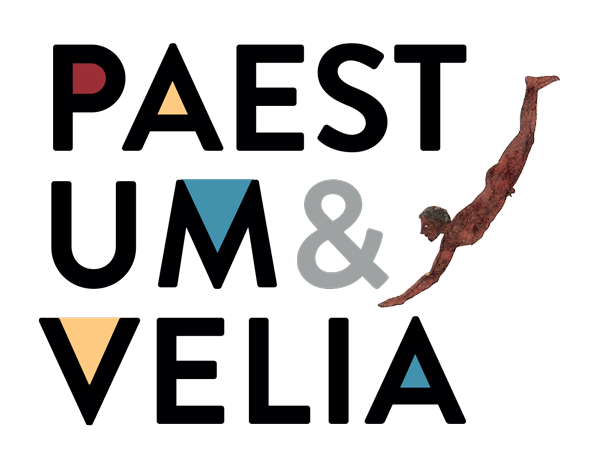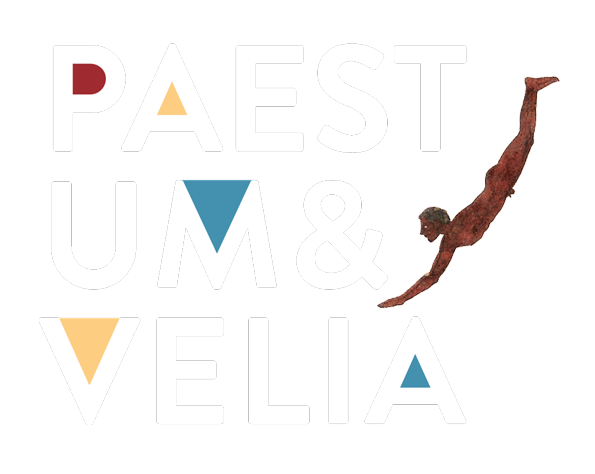Excavations in the south-western area of the northern urban sanctuary (Athenaion)

 Description:
Description:
The research was initiated in the summer of 2018 with geo-physical (geo-radar and geo-electrical) surveys and is the final outcome of long archival research and study of the materials that have made it possible to have a complete picture of all activities (excavations, restorations, knocking down structures) carried out in the area starting from the 19th century without overlooking even older prints and drawings. In September 2018, in the south-western section of the sanctuary, in a site measuring approximately 400 m2, after a careful study of the results of the geo-physical surveys, two small assays were set up (SS. 242, 243 of the Italian-French mission) at a short distance from each other.
The stratigraphy survey in the northernmost assay (S. 242), about 15 m from the base of the Athenaion, in the space between the sixth and the eighth column of the southern side of the peristasis, made it possible to trace the southern edge of an old trench that had cut anthropic activity levels, fortunately still intact. Excavating these levels made it possible to recognise a thick and very compacted layer of travertine chips and dust, very likely used to obliterate more ancient remains and to raise the height of a more ancient walking surface of the sanctuary. The latter, a well-preserved archaic compacted soil floor, was covered by an accumulation of tiles, fictile architectural elements and fragments of votive coroplastic figurines. The items recovered in the pile include the remains of the arm of an Athena Promachos statuette and a ‘horned’ type antefix.
In the assay executed more to the south (S. 243), the ancient stratigraphy is impaired first by the planting and later uprooting of a row of cypresses which, in the 1930s, marked the boundary of the archaeological area of the Temple of Ceres.
For visitors: A selection of the materials of the so-called Votive Offerings of Ceres (architectural and votive terracottas, metals and especially weapons, fragments of painted vases and other objects) has been displayed at the Museum in the exhibition The weapons of Athena, now an integral part of the museum’s pathway. The research, which then led to the archaeological investigation, is illustrated in the catalogue of the exhibition (see the bibliography item).
Scientific management: Prof. Fausto Longo, Dipartimento di Scienze del Patrimonio Culturale – Università degli Studi di Salerno.
Staff: Federica De Biase, Maria Luigia Rizzo, Michele Scafuro.
Objective: Rintracciare i limiti delle vecchie trincee di scavo e/o i livelli antropici raggiunti dai vecchi scavi ma non ancora indagati al fine di individuare le stratigrafie archeologiche e ricostruire il paesaggio sacro nelle sue trasformazioni (Autorizzazione: concessione di scavo 2018-2020).
Bibliography: Per gli scavi degli anni Trenta: S. Aurigemma, V. Spinazzola, A. Maiuri, I primi scavi di Paestum, Salerno 1986. Per gli studi sui metalli (in particolare le armi) recuperati nella cd. stipe di Cerere e sul santuario: R. Graells i Fabregat – F. Longo – G. Zuchtriegel, Le armi di Athena. Il santuario settentrionale di Paestum, Napoli 2017; Longo F., “Alcune riflessioni su Poseidonia in età arcaica: il teichos dei sibariti e l’apoikia tra fondazioni e rifondazioni”, in De Caro, S., Longo F., Scafuro, M., Serritella, A. Percorsi. Scritti di e per Angela Pontrandolfo, Paestum, pp. 199-214; Longo F., Le armi di Atena. I dati del santuario urbano di Poseidonia tra Greci e Lucani, in R. Graells, Longo F. (a cura di), Armi votive in Magna Grecia. Atti del Convegno Internazionale di Studi (Salerno-Paestum, 23-25 novembre 2017), Mainz am Rhein 2018, pp. 25-42; Longo F., “From Agropoli to Poseidonia. Reflections on the Origins and Early Decades in the Life of an Achaean Apoikia”, in Greco, E., Rizakis, A. (eds), Οι Αχαιοί στην Ελλάδα και στη Μεγάλη Ελλάδα: νέα ευρήματα και νέες προοπτικές – Gli Achei in Grecia e in Magna Grecia: nuove scoperte e nuove prospettive, Atti del Convegno internazionale, Atene, in corso di stampa; Longo F., D’Antonio A., I materiali in metallo dal santuario settentrionale di Paestum: contesto, distribuzione, tipologia, Paestum, in preparazione.
Weblinks:
Progetto di scavo all’Athenaion urbano di Paestum
Pae 2018 Scavo Archeologico
Credits: Il progetto di scavo si avvale di un finanziamento della Scuola di Specializzazione in Beni Archeologici dell’Università degli Studi di Salerno.






